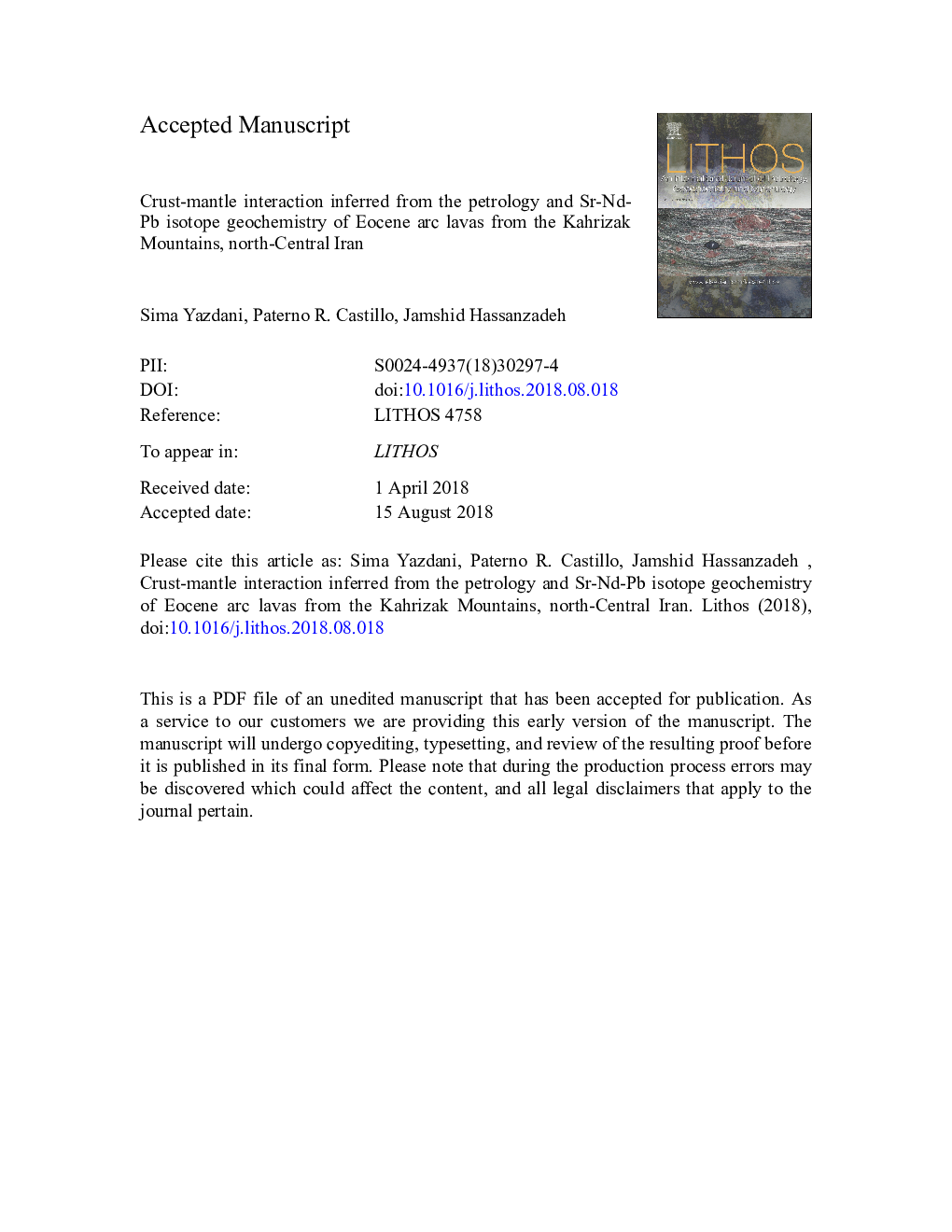| Article ID | Journal | Published Year | Pages | File Type |
|---|---|---|---|---|
| 10119972 | Lithos | 2018 | 75 Pages |
Abstract
The Eocene volcanic rocks from the Kahrizak Mountains in north-central Iran are part of the Urumieh-Dokhtar magmatic arc, which runs parallel to the Main Zagros Thrust segment of the Neo-Tethys suture. These volcanic rocks, similar to those from eastern Pontides and northern Anatolia, Turkey, were mainly produced during the Eocene magmatic flare-up associated with the Arabia-Eurasia convergence. The rock suite includes basalt, trachyandesite/andesite and trachydacite/rhyolite lavas and pyroclastic deposits that evolved compositionally from calc-alkalic to shoshonitic. Their normalized trace element concentration patterns are moderately enriched in light rare earth element and depleted in high field-strength elements (HFSE; e.g., Nb, Ta, Ti). They have narrow ranges of initial Pb isotopic ratios and 143Nd/144Ndi, but highly variable 87Sr/86Sri. The new analyses indicate that the parental magmas of the volcanic rocks were derived from a mantle source that had been enriched by fluids released from a subducted oceanic slab. The fluids introduced significant amounts of large ion lithophile elements, but negligible HFSE to the source. The parental magmas underwent fractional crystallization and assimilation of upper crustal materials to produce the range of volcanic rocks. Integration of new analyses with regional data suggests that the Eocene volcanic rocks from north-central Iran, together with ~coeval volcanic rocks in eastern Pontides and northern Anatolia, were most probably derived from a lithospheric mantle source that had been previously metasomatized by fluids derived from a subducted slab before and during the Arabia-Eurasia collision.
Keywords
Related Topics
Physical Sciences and Engineering
Earth and Planetary Sciences
Geochemistry and Petrology
Authors
Sima Yazdani, Paterno R. Castillo, Jamshid Hassanzadeh,
